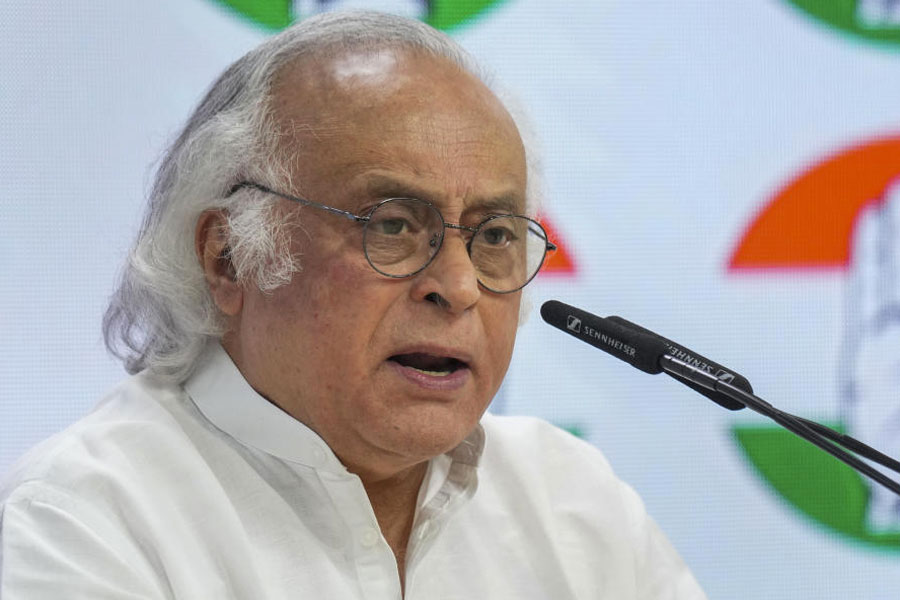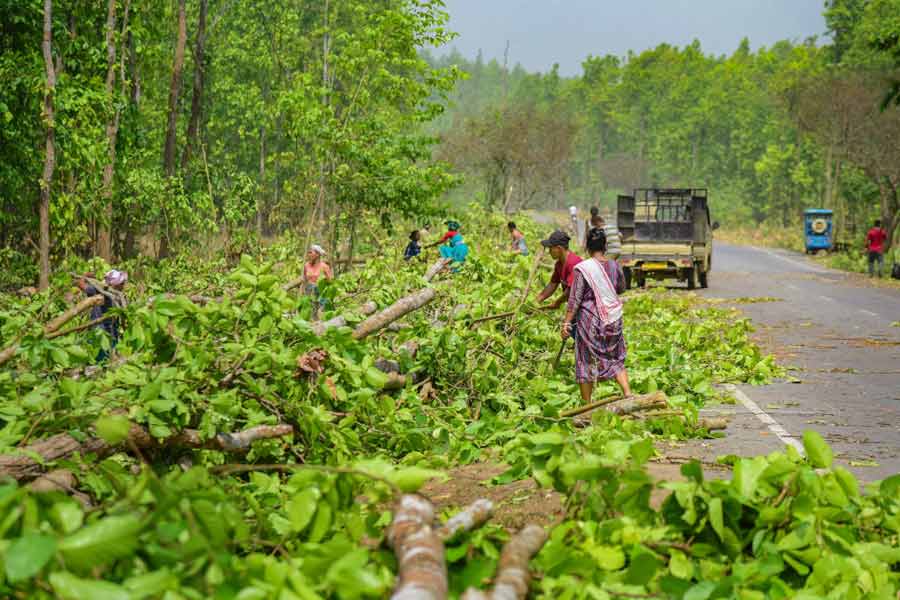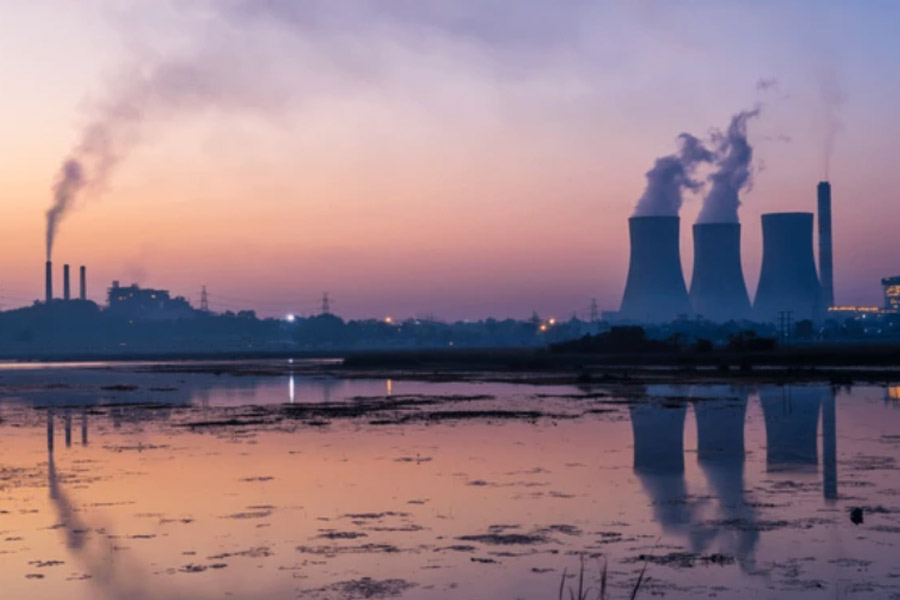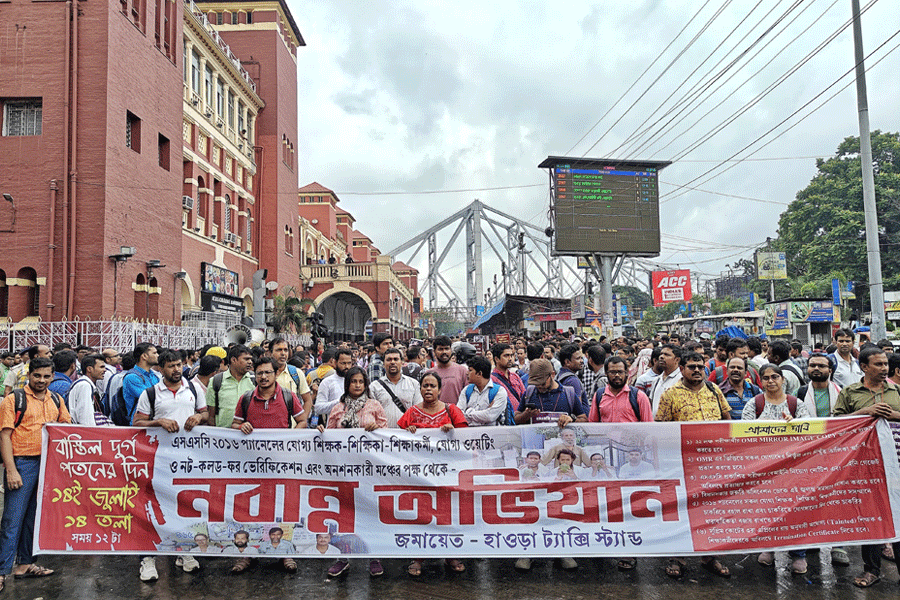 |
| A broken branch lies outside offices in the main Rupayan building |
 |
| The other building where no work has been done for six years |
 |
| Clothes being dried on chairs in Recording Theatre |
 |
| The room that used to be the canteen. (Amit Datta) |
Rupayan Colour Laboratory, the post-production centre for films in Salt Lake’s Sector IV, tops the list of Tollywood facilities in need of a turnaround prepared by Mamata Banerjee’s C-team. Metro explored the ailing facility recently.
How it started
The state government set up West Bengal Colour Film and Sound Laboratory Corporation Limited on July 5, 1980, so that film-makers from Bengal did not have to travel to private laboratories in Mumbai and Chennai for post-production. It was renamed West Bengal Film Development Corporation in 1983.
The colour film laboratory was inaugurated in 1986 and christened Rupayan by Satyajit Ray. The sound recording theatre was set up in 1990. The plan was to offer film-makers state-of-the-art infrastructure for post-production.
What it has become
With the infrastructure not being upgraded, Rupayan rarely gets work. The advent of the digital age of cinema has accelerated the downslide, with the facility lying virtually defunct for the last eight years. An initiative to lease out the loss-making post-production centre to a private firm in 2005 proved abortive.
What we saw
The two large buildings in the compound overlook a concrete path that has patches of grass on it. The main four-storey building, called Process Laboratory, looks desolate with fading paint and rusting pipes. The glass panes of several windows are broken and the insides are dark. The water tanks around the building are empty.
The other building, called Recording Theatre, looks just as sorry. It shut down six years ago.
“No one takes care of the facility now. A few years ago, it had been decided that Rupayan would be revived through a public-private partnership but nothing came of it,” says a source.
Process Laboratory: Apart from the facility after which it has been named, the main building houses editing tables, analyser rooms, negative cutting rooms and the administration office with wood and glass encased rooms and a projection hall.
A pedestal fan stands in a corner of the lobby, facing broken plastic chairs covered in dirt. There are cobwebs on the notice board.
With the labs shut, few employees report for work regularly. “Very little gets done here now. Earlier, people would even work overtime. There are 56 administrative employees but no work. Our only work is to pay salaries,” says an official.
Recording Theatre: The sound recording set-up with dubbing facilities once had its own sound engineer. Its fate was sealed when talks of modernising the theatre with Dolby Digital sound recording came to a nought.
Employees who stay on the premises use the waiting room outside the recording theatre, which has sofas and tables, to dry their clothes.
“From the time cinema went from celluloid to digital, Rupayan has been on a downslide. The technology in film post-production and sound recording has changed but no effort has been made to keep pace with the upgrade and buy the right equipment. There was a plan to offer a voluntary retirement scheme to a section of the staff and employ skilled people but it could not be executed,” says the source.
Other facilities: The building between the two main ones houses a common room-cum-canteen. It, too, is locked with protest slogans written on walls. Empty alcohol bottles are strewn around behind the canteen.
“The canteen has been shut for some time now. There was a time when Salt Lake did not have many eateries and the technicians working at Rupayan would eat here regularly. Today that scene has changed,” adds the source.











